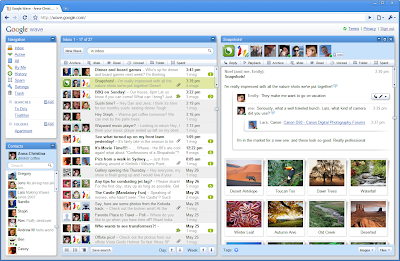Anyone familiar with social technologies will remember the launch of Google Wave in the fall of 2009.
It was a new kind of communication platform released into a beta test with 100,000 invitations sent out.
Google’s strategy in limiting the rollout was designed not to overload the architecture (and perhaps to create a sense of scarcity, which it did very well). Google also wanted to develop the platform experientially based on user feedback.
However, on Wednesday Google announced it was pulling the plug on Wave. Google CEO Eric Schmidt tried to put a positive spin on it, describing Wave as a failed experiment that was also a learning experience. And there are certainly some lessons that can be applied to the rollout of enterprise social platforms.

Numbers Matter – Develop A Strategy For Rapid Adoption
The reality is that, as a collaboration platform, Wave’s success would be dependent upon bringing teams of collaborators together on the platform. If one person in a team managed to secure one of the rare invites, but no one else in their group did, it would be pointless being on Wave.
Plenty of people on the initial beta version experienced the sound of silence when they connected onto Wave.
Ultimately, this proved a challenge for Google, because every social community goes through waves of adoption.
Plenty of people on the initial beta version experienced the sound of silence when they connected onto Wave.
Early adopters are likely to become evangelists, spreading the word to their friends and encouraging further adoption.
It’s critical for these early adopters to have a positive experience. And with a collaboration platform, that means being able to easily collaborate in teams.
Many organizations attempt to roll out collaboration platforms in a limited adoption pilot. Such limited pilots can be highly succesful when they focus on a specific group of connected people, such as a division or project team, to prove business benefits early on. Pilots that limit numbers across a very broad group, such as an enterprise, without regard to how they are connected, limit the utility of the collaboration platform.
Success often depends upon having as many connected people as possible using the platform. When deploying a collaboration platform, it is very important to think about your adoption strategy: how will you get the maximum number of participants using the platform in the least amount of time? My colleague, Rob Koplowitz, recently highligted how companies are using organization-wide jam sessions to kick-start participation, and tactics such as hiring an internal community manager and leveraging evangelists are well documented in Forrester’s research, including this case study on United Business Media. So develop a strategy for rapid adoption.
Keep It Simple
The KISS principle applies time and again because it works. One of the challenges for Wave was that the interface was not immediately intuitive, even for people used to technology. This put a barrier in the way of spreading adoption. If I need to explain something to a colleague before they can understand how to use it, then there is an inbuilt impediment to sharing, because I need to invest even more time in helping them to use it.
This can be a challenge faced by collaboration platforms designed within IT – because the people designing the platform have a very high interface IQ (i.e., the ability to navigate complex system interfaces), they sometimes neglect to design for people with a lower interface IQ.
Usually sandbox testing will reveal such flaws early, but it’s better to design with the KISS principle in mind from the outset. Remember, many people who are still in the organization struggled to program their VCRs in years gone by.
Users of the collaboration platform should not need someone to explain how to use it. It’s worth noting that the most successful collaboration platform to date, Wikipedia, maintained a consistent design interface for almost ten years, only recently undergoing an interface redesign. So keep it simple.
Don’t Chase Too Many Rainbows
Some commentators have suggested that what ultimately killed Google Wave was the launch of Google Buzz before Wave was fully launched. Buzz could be easily adopted by Google Mail users to make email more social, but it too had problems. Specifically, Google Buzz had some huge privacy questions that caused concern early on. That said, Buzz’s ease of adoption for existing Gmail users and its simple design allowed it to capture a large user base in a short amount of time. In trying out another new idea, Google may have effectively killed Wave itself. Chasing too many rainbows in enterprise collaboration can dilute the effectiveness of any initiative.
The lesson here is that introducing multiple changes to collaboration platforms, including design changes, in quick succession can cause problems with adoption. Giving people too many choices can cause confusion and lead to avoidance. Some organizations are experimenting with deploying multiple collaboration platforms and learning lessons from each deployment. However, this strategy fails to capitalize on the synergies of driving adoption on a single platform and focusing on ensuring that the platform has real business utility. So don’t chase too many rainbows.
Nigel Fenwick is vice-president and principal analyst at Forrester Research in Cambridge, Mass.
Source: Blog post in CIO.com




